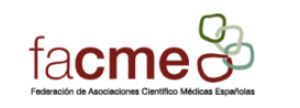Evaluación de la fiabilidad de las mediciones de PIO obtenidas con el neumotonómetro respecto a las obtenidas con el tonómetro de referencia tipo Goldmann. Asimismo, análisis de la diferencia entre las mediciones obtenidas por ambos métodos respecto al hecho de ser miope o hipermétrope.
DiseñoEstudio comparativo de dos métodos de medida.
EmplazamientoConsultas de oftalmología general y atención primaria de nuestra área sanitaria. Pacientes. Muestra aleatoria de entre los pacientes que acudieron por cualquier motivo a la consulta de oftalmología general entre el 1 de mayo y el 30 de junio del 1996. Se excluyeron aquellos con enfermedades predisponentes para glaucoma, intervenciones oculares o toma de fármacos influyentes en la PIO.
IntervencionesEl oftalmólogo realizó 3 mediciones de PIO en cada ojo, hallándose la media aritmética y graduó a todos los pacientes. El médico de atención primaria realizó 3 mediciones de la PIO en cada ojo con el neumotonómetro, hallándose la media aritmética.
ResultadosSe incluyeron 81 pacientes, de los cuales 7 presentaron una PIO elevada. El neumotonómetro, respecto al tonómetro de Goldmann presentó una sensibilidad del 86% (IC del 95%, 18,20-99,63%) y una especificidad del 84% (IC del 95%, 89,66–78,08%). El neumotonómetro obtuvo mediciones de 1,116-2,008 mmHg superiores al tonómetro de Goldmann. Esta diferencia, clínicamente despreciable, no se relacionó con el hecho de ser miope o hipermétrope. Se ha encontrado una asociación lineal positiva entre las mediciones realizadas por los 2 métodos, con un coeficiente de correlación de 0,8086 (p < 0,001; IC del 95%, 0,7476-0,8560).
ConclusionesLos resultados obtenidos coinciden con otras series publicadas. Se observa una tendencia a medidas más elevadas con el neumotonómetro. No se han objetivado mayores diferencias entre ambos métodos en miopes. El neumotonómetro es una técnica válida y fiable para su utilización en atención primaria, es de sencillo manejo, no transmite enfermedades infecciosas ni requiere colirios anestésicos ni tinciones corneales.
Evaluation of reliability of measurements of IOP obtained with air-puff noncontact tonometer respect the obtained with the conventional Goldmann tonometer. As well, analysis of the possibility of a higher difference between the measurements by both methods respect the fact of being myope or hypermetrope.
DesignComparative study of two measurement methods.
SettingGeneral ophthalmology clinic and primary care clinic of our sanitary area.
PatientsAleatory sample among the patients who went to the general ophthalmology clinic for any cause from the first of May to the thirtieth of June of 1996. The patients with predisposing processes for glaucoma were excluded, as well as those who suffered ocular surgery or those who took drugs which influenced the IOP.
InterventionsThe ophthalmologist made three measurements of IOP in each eye and the sight of all the patients were tested. The arithmetic average was made among every three measurements. The physician of primary care made three measurements of IOP in each eye with the air-puff noncontact tonometer, and the arithmetic average was made.
Results81 patients were included, from whom 7 presented high IOP. The sensibility of the air-puff noncontact tonometer, compared with Goldmann tonometer, was 86% (95% CI, 18.20–99.63%), and the specificity 84% (95% CI, 89.66-78.08%). The air-puff noncontact tonometer obtained measurements between 1.116 and 2.008 mmHg higher than the Goldmann tonometer. This difference, worthless from the clinic point of view, didn't find a relationship with the fact of being myope or hypermetrope. It was found a positive lineal association between the measurements made by both methods, with a correlation coefficient of 0.8086 (p < 0.001, 95% CI, 0.7476-0.8560).
ConclusionsThe results obtained are similar to the ones of other published series. A tendency of higher measurements with the air-puff noncontact tonometer is observed. It hasn't been observed a higher difference between both methods in myopes. The air-puff tonometer is a valid reliable technique to be used in primary care, it is easy to use, it doesn't transmit infectious illnesses, and it isn't necessary to use anaesthetic or staining eyedrops.







